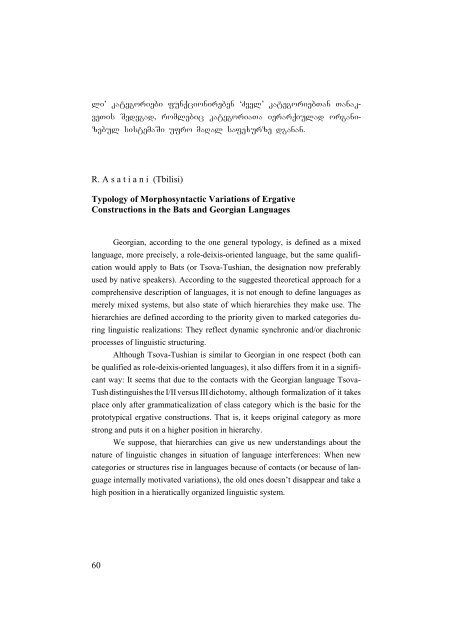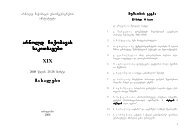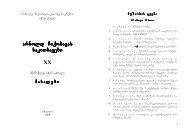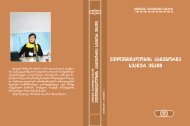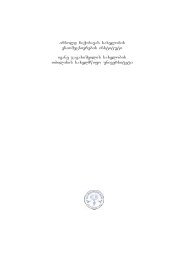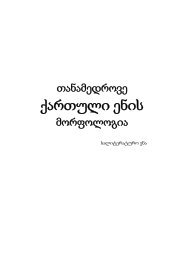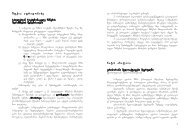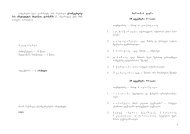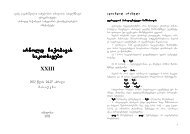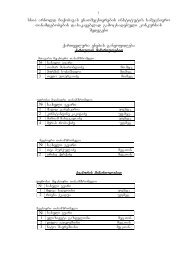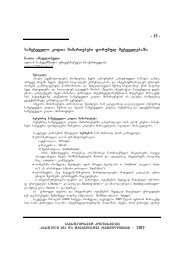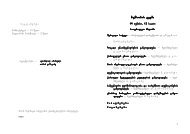5 r. a b a S i a (Tbilisi) bgeraTSesatyvisobis erTi rigisaTvis qarTvelur ...
5 r. a b a S i a (Tbilisi) bgeraTSesatyvisobis erTi rigisaTvis qarTvelur ...
5 r. a b a S i a (Tbilisi) bgeraTSesatyvisobis erTi rigisaTvis qarTvelur ...
Create successful ePaper yourself
Turn your PDF publications into a flip-book with our unique Google optimized e-Paper software.
li’ kategoriebi funqcionireben ‘Zvel’ kategoriebTan TanakveTis<br />
Sedegad, romlebic kategoriaTa ierarqiulad organizebul<br />
sistemaSi ufro maRal safexurze dganan.<br />
R. A s a t i a n i (<strong>Tbilisi</strong>)<br />
Typology of Morphosyntactic Variations of Ergative<br />
Constructions in the Bats and Georgian Languages<br />
Georgian, according to the one general typology, is defined as a mixed<br />
language, more precisely, a role-deixis-oriented language, but the same qualification<br />
would apply to Bats (or Tsova-Tushian, the designation now preferably<br />
used by native speakers). According to the suggested theoretical approach for a<br />
comprehensive description of languages, it is not enough to define languages as<br />
merely mixed systems, but also state of which hierarchies they make use. The<br />
hierarchies are defined according to the priority given to marked categories during<br />
linguistic realizations: They reflect dynamic synchronic and/or diachronic<br />
processes of linguistic structuring.<br />
Although Tsova-Tushian is similar to Georgian in one respect (both can<br />
be qualified as role-deixis-oriented languages), it also differs from it in a significant<br />
way: It seems that due to the contacts with the Georgian language Tsova-<br />
Tush distinguishes the I/II versus III dichotomy, although formalization of it takes<br />
place only after grammaticalization of class category which is the basic for the<br />
prototypical ergative constructions. That is, it keeps original category as more<br />
strong and puts it on a higher position in hierarchy.<br />
We suppose, that hierarchies can give us new understandings about the<br />
nature of linguistic changes in situation of language interferences: When new<br />
categories or structures rise in languages because of contacts (or because of language<br />
internally motivated variations), the old ones doesn’t disappear and take a<br />
high position in a hieratically organized linguistic system.<br />
60


